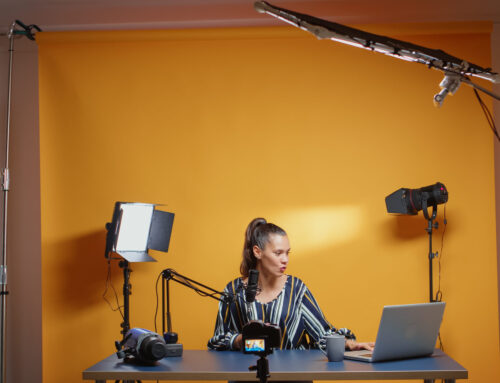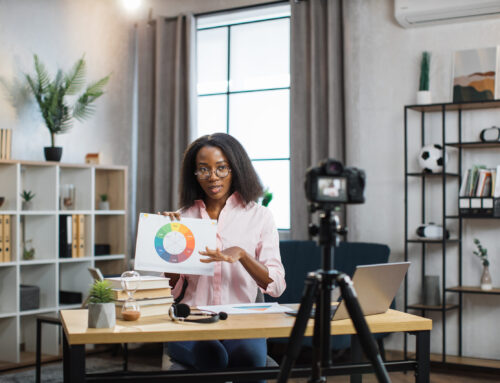 The web is a visual space and most people won’t read your whole newsletter, but they will look at the pictures. Jeff Jones has taken his lifelong love of photography and putting it to good work for Community Service Society of New York as the manager of marketing and production. ~Kivi
The web is a visual space and most people won’t read your whole newsletter, but they will look at the pictures. Jeff Jones has taken his lifelong love of photography and putting it to good work for Community Service Society of New York as the manager of marketing and production. ~Kivi
Guest Post by Jeff Jones of Community Service Society of New York
“You don’t take a photograph, you make it.” -Ansel Adams
Whether it’s for an annual report, e-news, donor appeal, or social media, you always need good photos. Most organizations can rarely hire a professional photographer, so it’s usually left to us to figure it out. After years of shooting for a number of non-profit organizations, here are my top six tips for getting a better image.
1) Get Close
If you remember one recommendation on this list, I hope it’s this one: You need to move closer. This can feel uncomfortable, nearly invading someone’s personal space by pushing a camera up close, but you need to. Moving nearer to your subject (whether it’s a persons face, a group of people, a building, anything) can help your audience create a stronger, more personal connection. Remember when taking photos of people we usually don’t need to see their whole body (a person’s knees rarely tell us much about them). It takes courage and practice to get up close, but the photos you get will be well worth it.
2) Use Natural Light
Anytime you are arranging people to be photographed try to find a spot where you can use natural light as the main light source. Many buildings are filled with unflattering fluorescent lights that shine directly down from above. Try to find a large window and have your subject stand almost facing it, turned just a little to the right or left. Doing this lets the natural light fill their face and also creates a bit of shadow to provide some definition. Turning off the other lights in the room can often be helpful so as to not mix multiple different sources and colors of light. This tip is obviously for daytime use only.
3) Try Not to Use the Flash
Unless it is simply too dark to get a decent image, try to avoid the flash. The built-in flash on most consumer-grade cameras just isn’t great (too small and directional), and can give your subject a ghostly pale look. Try turning your flash off as much as you can. If your pictures are looking blurry, use a tripod or monopod to steady your camera.
4) Get Action Shots
Capturing action, when possible, is much more interesting and informative than a posed image. To do this well you need to follow tip #1 and get close, in the action, and try to get the image that really shows your audience what is happening. At one non-profit I saw pictures from a charity-walk they had sponsored and couldn’t find any pictures of people walking! We really want to see people doing something.
5) Create Your Own Action
Sometimes you need to create the situation in which to take interesting photographs. I recently found myself at an luncheon for a group of volunteers held inside a windowless, nondescript event room. I took some pictures of the volunteers receiving their awards on the stage, but I couldn’t get very close and none of the shots were looking great. So I set up a camera on a tripod in the back of the hall (the area with the best lighting available) and asked the attendees to write a short statement about why they volunteer in big letters on a piece of cardstock. They held their signs up to their chest and smiled for a picture. These images looked great with the article we wrote about the breakfast, and have been used in many other volunteer materials since. By having my subjects do something special for the photo I created a more interesting, and more useful, image.
6) Invest In Equipment
Does using an expensive camera automatically make your photos amazing? No, but it doesn’t hurt. Investing in a better camera, one where you have more control over the functions (and taking the time to learn how they work), can really improve your imagery. Since photography is almost completely digital now it is also good to know how to use some photo editing software. Adobe Photoshop is ubiquitous but can be difficult to learn, especially if you are using it infrequently. Take a look at Adobe Lightroom. Not only is great for editing and enhancing your photos, but also for cataloging them.
Try these tips out. Good photography takes practice. The great thing about digital photography is that you rarely run out of room to take more pictures, so take plenty. Just remember to edit down to the ones that are actually useful and delete the others.
Jeff Jones is currently the Manager of Marketing and Production at the Community Service Society of New York. A photographer since a young age, Jeff uses this experience along with his work in audio, video, and graphic design to create compelling media for a variety of outlets. See more of his work at www.jeffreyalanjones.com





